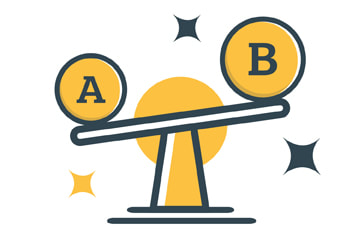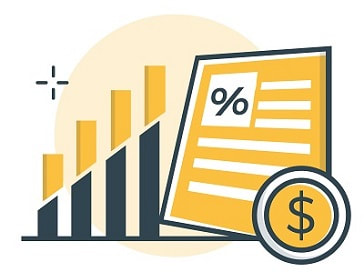Working Capital (and How to Improve It) - The Definitive New Zealand Guide
Maximize your business's financial health with our guide on working capital. Learn how to calculate it, improve it, and answer frequently asked questions for a successful financial future.
Updated 20 July 2024
What is Working Capital?
A company's working capital is the difference between a company's assets and its liabilities:
For example, if a café has $50,000 in current assets (bank account balances, coffee and other food and drink stock ) and $30,000 in current liabilities (wages due to staff, a rent bill, a water bill and a supplier bill), its working capital would be $20,000 ($50,000 less $30,000).
Working Capital is a measure of its liquidity and indicates how a company will fare financially. A company with positive working capital has the possibility of growth; a company with negative working capital may have trouble paying its bills and staying open. Our guide covers:
Know This: Thousands of New Zealand businesses have closed due to negative working capital. It happens very easily - debts quickly build up faster than cashflow. After a certain point, the business becomes financially stressed, and the owners make hard decisions about its future.
- Current assets include cash on hand and money coming in (accounts receivable) and inventory of both finished products and raw material.
- Current liabilities include anything that 'takes away' from the company, such as unpaid bills.
For example, if a café has $50,000 in current assets (bank account balances, coffee and other food and drink stock ) and $30,000 in current liabilities (wages due to staff, a rent bill, a water bill and a supplier bill), its working capital would be $20,000 ($50,000 less $30,000).
Working Capital is a measure of its liquidity and indicates how a company will fare financially. A company with positive working capital has the possibility of growth; a company with negative working capital may have trouble paying its bills and staying open. Our guide covers:
Know This: Thousands of New Zealand businesses have closed due to negative working capital. It happens very easily - debts quickly build up faster than cashflow. After a certain point, the business becomes financially stressed, and the owners make hard decisions about its future.
How to Calculate Working Capital
Calculating working capital is simple:
Current assets – Current liabilities = Working capital
Here's what's included in each:
Current assets – Current liabilities = Working capital
Here's what's included in each:
- Current assets – Any asset listed on the balance sheet that you'll own or receive within the next 12 months. It may include cash, inventory, and accounts receivable. It may also include any other assets you have or will receive within the next 12 months.
- Current liabilities – Any expense you have now or within the next 12 months is a liability. It includes wages, taxes due, accounts payable, and any other current expenses.
The Main Components of Working Capital (and why they matter)
Positive working capital signifies that a company is healthy and can manage its incomings and outgoings with ease. Breaking down working capital means looking at the significant components that make it up, including:
- Accounts receivable – This is the money due to a company. They demonstrate the products or services provided and are waiting for payment. They count as an asset because it's money that is will hit the company's bank account. The longer the payment terms extended to the client (i.e. 7 days, 21 days, 20th of the following month etc), the longer the wait for cash.
- Accounts payable – Just as a business has money coming in, every business has money going out. Any services or products received that isn't paid yet is classified as accounts payable. Positive working capital means a company positively balances between accounts receivable and accounts payable, not over-extending itself in either area.
- Inventory – A company's inventory is a large component of the working capital because it's a sign of how a company turns materials into sales. Investors also look at how quickly inventory is turned over (faster means more sales and, in most cases, greater profits). Inventory plays into a company's working capital, proving whether the business handles inventory well or overextends itself.
How to Improve Working Capital
A healthy working capital ratio is crucial to allow any business meet unexpected expenses, take advantage of new opportunities, and ensure long-term stability. Improving working capital isn't difficult but does take some Here are some tips and strategies for improving your company's working capital:
Know This: Improving working capital is crucial for small businesses long-term success and stability. By implementing these strategies and continually monitoring and assessing your financial situation, you can ensure that your business has the resources it needs to grow and thrive. However, the tips and strategies presented here are general in nature and may not be applicable to all small businesses. It's always a good idea to seek advice from a business accountant before making any major financial decisions.
- Manage your inventory carefully: One of the largest assets for many small businesses is inventory, and managing it effectively can significantly impact working capital. Keep inventory levels low, ensure inventory is turning over quickly, and carefully manage slow-moving items (by getting them sold). Consider implementing an inventory management system to streamline your processes and ensure that you have accurate and up-to-date information.
- Improve cash flow management: Effective cash flow management is critical for maintaining a healthy working capital balance. Make sure you accurately track your income and expenses and prioritize paying bills on time. You may also consider implementing a system for managing and tracking payments and collections, such as a software system (Xero, MYOB) or an accounts payable/receivable process.
- Negotiate payment terms with suppliers: The payment terms you have with your suppliers can significantly impact your working capital. Try negotiating longer payment terms with suppliers (e.g. 60-90 days), or consider using a purchase order invoice financing program to help manage cash flow.
- Increase sales: Increasing sales is a straightforward way to improve working capital. This can be achieved through various means, including expanding your customer base, launching new products, or investing in marketing and advertising.
- Utilize factoring or short-term loans: If your business struggles with working capital, you may consider using invoice factoring or a short-term business loan to help manage your cash flow. These options can provide the financial resources you need to maintain operations and take advantage of new opportunities.
- Monitor your accounts receivable: Managing accounts receivable is a key part of maintaining a healthy working capital balance. Regularly monitor your accounts receivable, follow up on past-due invoices (our guide to chasing late debtors makes this easy), and implement a process for collecting payments.
- Assess and reduce debt. Reducing debt is an effective way to improve working capital, as it frees up cash that can be used to pay bills and meet short-term obligations. Assess your current debt levels, negotiate better interest rates, and explore debt consolidation options to reduce your overall debt load.
Know This: Improving working capital is crucial for small businesses long-term success and stability. By implementing these strategies and continually monitoring and assessing your financial situation, you can ensure that your business has the resources it needs to grow and thrive. However, the tips and strategies presented here are general in nature and may not be applicable to all small businesses. It's always a good idea to seek advice from a business accountant before making any major financial decisions.
Working Capital - Frequently Asked Questions
Why is Working Capital Important?
All companies need working capital to stay in business. You could have a sales machine and high accounts receivable balance. Still, if you never receive payment (or have to incur more costs chasing), the long-term business operations are seriously limited.
Working capital is what keeps your business running – you always need money to operate your business efficiently, whether that means paying wages, taxes, buying new products or equipment, or investing in the business in other ways. If you don't have any working capital, none of this is possible, and you could end up out of business.
Working capital is what keeps your business running – you always need money to operate your business efficiently, whether that means paying wages, taxes, buying new products or equipment, or investing in the business in other ways. If you don't have any working capital, none of this is possible, and you could end up out of business.
What Affects Working Capital?
Working capital can fluctuate throughout a business's lifetime, and the exact amount or ration will depends on what is going on at any given time. For example:
- A company that's expanding may have low working capital because it has a lot more expenditures as it invests in its product line or moves into new markets. Cash flow may fall for the time being, but will eventually come back up as the business takes off in the new markets.
- A company's working capital may also fall if the accounts payable get too high. If you don't stay on top of your accounts payable and/or get in over your head, it depletes your current assets and is reflected in the lower working capital.
- Working capital may also fall if sales fall. Inventory may increase at this time, but accounts receivable (sales) fall the most, which hurts your working capital overall.
What is a good level of working capital?
Ideally, you want a working capital of at least 1.0. Anything below that (or negative) shows lenders and creditors that your business is in trouble. If working capital is negative, the business has liquidity problems. It may not have high enough sales (i.e. cashflow) to stay profitable (or return to profitability if it's already loss-making).
On average, lenders and creditors look for a working capital ratio of 1.2 to 2.0. This represents a healthy company that can handle its ins and outs and has enough liquidity to keep operating and/or to grow.
On average, lenders and creditors look for a working capital ratio of 1.2 to 2.0. This represents a healthy company that can handle its ins and outs and has enough liquidity to keep operating and/or to grow.
What does working capital tell you?
Working capital tells investors or creditors whether or not you're a financial risk. If you have low or negative working capital, you may not have enough money to pay your bills, making investors and creditors hesitant to continue supporting you.
If you have good working capital, you are a good risk and will have more opportunities with investors, suppliers, and lenders.
If you have good working capital, you are a good risk and will have more opportunities with investors, suppliers, and lenders.
How does a company's credit policy affect its working capital?
A company's credit policy is important. If it's too tight (i.e. 5-10 day payment terms), it may stop others from buying from them, decreasing their accounts receivable. If it's too loose, though, it could make customers take too long to pay, but it may increase their purchase amount.
Does working capital change?
Yes - working capital is constantly changing as your accounts receivable and accounts payable continually change. Accounting software like Xero calculate it daily as your current assets and liabilities change.
Do companies require working capital to grow?
Yes - working capital is essential to a company's growth. Without it, growth prospects are limited because money on hand must pay bills first to keep creditors under control. This is a massive distraction for the business and therefore limits growth.




